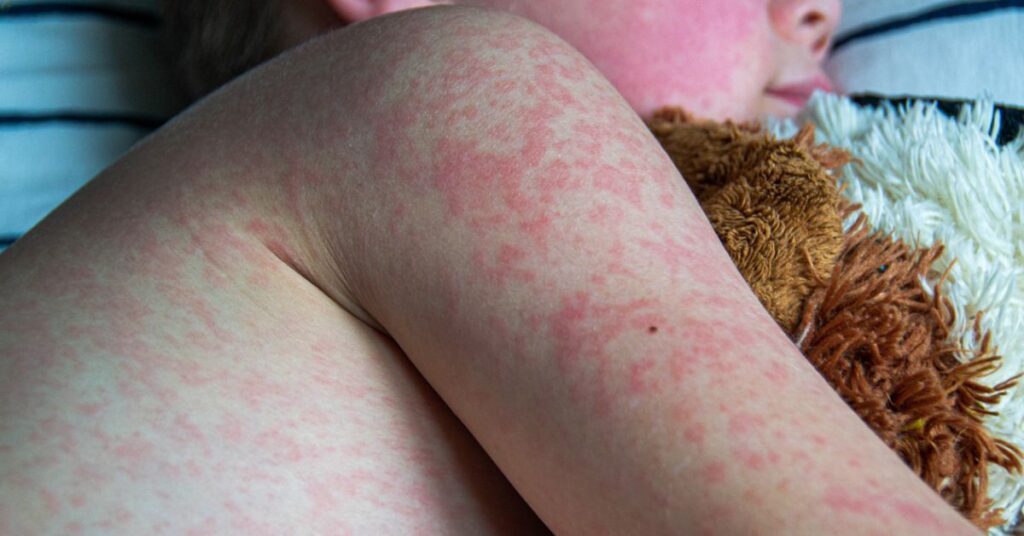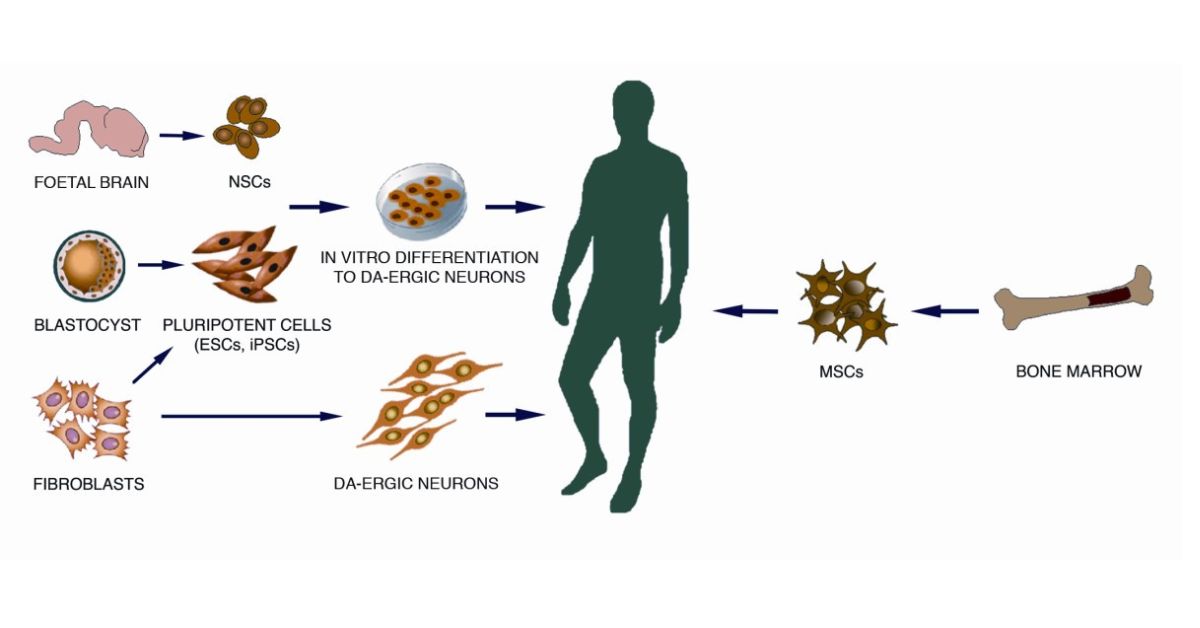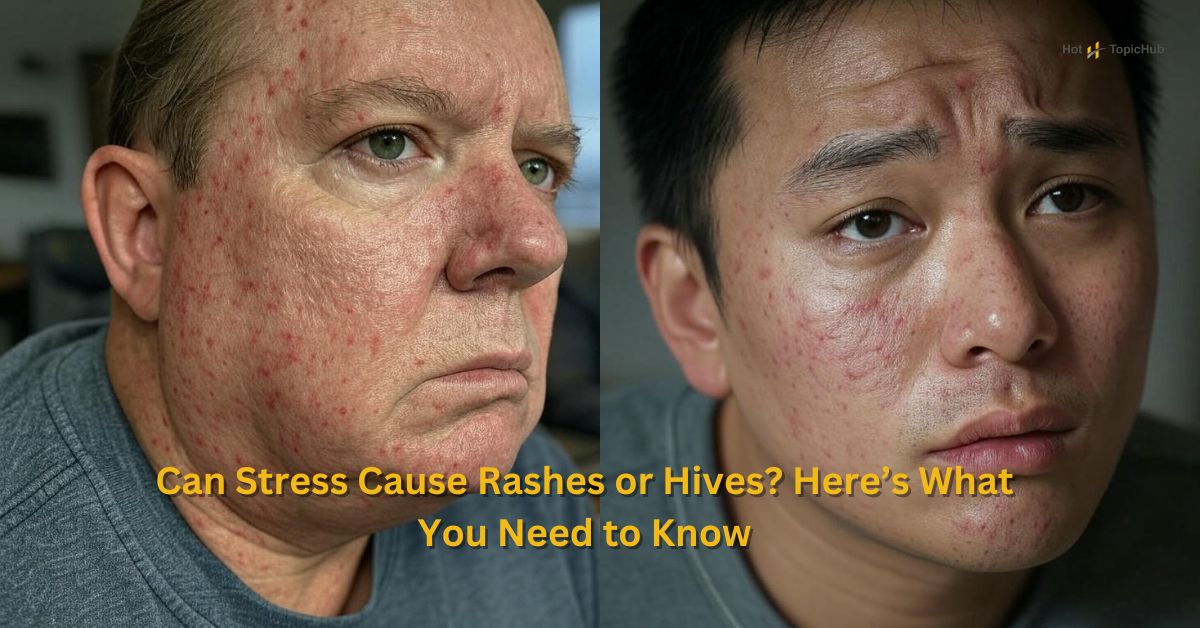Measles, once thought to be a disease of the past, is still a global health concern. With outbreaks on the rise again, it’s essential to understand this highly contagious disease, its risks, and how to protect yourself and others. Whether you’re a parent, healthcare professional, or simply someone wanting to learn more, this guide offers a comprehensive breakdown of everything you need to know about measles.
Introduction to Measles
A Quick Overview
Measles is a viral disease caused by the measles virus. Known for its characteristic rash, it primarily affects children but can infect individuals of any age. Thanks to the widespread availability of vaccines, cases have significantly declined over the years. However, due to vaccine hesitancy and misinformation, outbreaks still occur, putting many lives at risk.
Why It Still Matters Today
While measles was declared eliminated in many countries, its resurgence highlights the dangers of undervaluing vaccinations. It’s not just about the itchy rash; measles can lead to severe complications, including death. Addressing this preventable disease is crucial to ensuring public health.
What Causes Measles?
The Measles Virus
Measles is caused by the Morbillivirus, which specifically infects humans. Once it enters your system, the virus targets the respiratory tract, eventually spreading throughout the body. It’s one of the most contagious diseases known to man.
- Transmission: The virus spreads through respiratory droplets when an infected person coughs or sneezes. It can linger in the air for up to two hours after the infected individual has left the area.
- Incubation Period: Symptoms typically appear about 10-14 days after exposure to the virus, though the infected person can unknowingly spread the disease in the days leading up to symptom onset.
- At-Risk Populations: Young children, pregnant individuals, and those with weakened immune systems are at a higher risk of severe complications.
- Complications: Beyond the classic high fever and rash, measles can cause pneumonia, encephalitis (brain swelling), diarrhea, and in some cases, permanent hearing loss.
Understanding how the virus spreads and affects people highlights the critical importance of vaccination and global immunization efforts.
How It Spreads
Person-to-Person Transmission
The measles virus spreads through respiratory droplets when an infected person coughs, sneezes, or talks. You can contract it simply by breathing in contaminated air or by touching a surface with the virus and then touching your face.
How Contagious Is It?
Measles is alarmingly contagious. Approximately 90% of unvaccinated individuals who come in contact with the virus will get sick. The virus can linger in the air for up to two hours after an infected person has left the area.
Signs and Symptoms of Measles
Early Warning Signs
The initial symptoms of measles often mimic those of other illnesses, making early detection tricky. These include:
- Fever
- Cough
- Runny nose
- Red, watery eyes (conjunctivitis)
Classic Measles Symptoms
After the first few days, more telltale signs appear:
- Koplik spots (small white spots) inside the mouth
- A blotchy red rash that starts on the face and spreads down to the rest of the body
Severe or Rare Complications
While many recover without issues, complications can arise, especially in vulnerable groups. These include:
- Pneumonia
- Brain swelling (encephalitis)
- Severe dehydration
- Vision and hearing problems
Stages of Measles Infection
Incubation Period
The incubation period typically lasts 7-14 days, during which no symptoms appear but the virus begins spreading in the body. During this phase, the infected person is not yet contagious, as the virus is still taking hold.
Key points about the incubation period include:
- The virus begins to replicate in the respiratory tract and nearby lymph nodes.
- No outward signs of infection are present, making it difficult to detect the illness at this stage.
- This period is crucial for the virus to prepare to spread rapidly in the later phases of infection.
It is important to note that while the infected individual seems healthy during this period, the measles virus is already working silently within the body. Early exposure to individuals who may later become symptomatic highlights the importance of vaccination as a key preventive measure.
Prodrome Stage
This is the initial symptomatic phase, marked by fever, cough, and conjunctivitis. It’s during this stage that you’re most contagious. Typically lasting 2 to 4 days, this phase is characterized by the following key features:
- Coryza (runny nose): A common symptom that contributes to the ease of spread through respiratory droplets.
- High fever: The fever can sometimes reach temperatures as high as 104°F (40°C).
- Koplik spots: Small, bluish-white spots that appear inside the mouth, often on the inner cheeks, which are a hallmark sign of measles.
During this phase, symptoms may appear mild initially but progressively intensify, making early diagnosis challenging. Awareness of these symptoms is critical, as timely medical attention and isolation can significantly reduce the risk of further transmission.
Rash Appearance
The characteristic rash appears around the 3rd to 5th day, starting at the hairline and spreading outward. It typically progresses to the face, neck, trunk, and limbs in a sequential manner. The rash consists of small, red spots, some of which may be slightly raised, forming larger patches in severe cases.
Key points about the rash include:
- The rash is usually itchy and uncomfortable, though severity varies.
- It generally lasts for about 4 to 7 days before fading gradually.
- As the rash fades, it may leave behind a brownish discoloration or peeling skin.
- The onset of rash is often accompanied by a high fever, which may spike as the rash emerges.
Monitoring the progression of the rash is important for identifying measles and distinguishing it from other viral exanthems.
Recovery Period
Symptoms gradually subside, but fatigue and lingering cough can persist for weeks. It is crucial to ensure proper rest and hydration during this time to support the body’s recovery process. Nutrient-rich meals and vitamin supplements, particularly Vitamin A, can aid in improving immune response and overall healing.
- Avoid strenuous activities until energy levels return to normal.
- Maintain a balanced diet to help regain strength.
- Stay hydrated by drinking plenty of water, herbal teas, or broths.
- Monitor any persistent symptoms and seek medical advice if complications arise, such as secondary infections or prolonged weakness.
- Keep up-to-date with routine checkups or follow-up appointments to ensure full recovery.
How Is Measles Diagnosed?
Physical Symptoms
Doctors often identify measles through its distinct characteristics, like Koplik spots and the rash. Koplik spots are small, bluish-white spots that appear on the inner lining of the cheeks, often preceding the rash. The rash itself usually starts on the face and spreads downward to the rest of the body, forming flat red patches that may merge together in some areas.
Other early symptoms that aid in diagnosis include:
- High fever, which can reach up to 104°F (40°C).
- Cough, often dry and persistent.
- Runny nose and reddened, watery eyes (conjunctivitis).
- General fatigue and body aches.
These symptoms typically appear 10-14 days after exposure to the virus, making it vital to monitor individuals who may have had contact with infected people. Early recognition and diagnosis are crucial to prevent complications and the spread of the disease.
Blood Tests and Lab Confirmation
For a definitive diagnosis, blood tests can confirm the presence of measles antibodies. Laboratory testing often involves detecting immunoglobulin M (IgM) antibodies specific to measles, which typically become detectable shortly after the onset of the rash. This test is highly effective in confirming recent infection. Additionally, reverse transcription-polymerase chain reaction (RT-PCR) testing may be used to detect the measles virus RNA, providing further confirmation of the diagnosis.
Key points to remember about blood tests and lab confirmation include:
- Timing of tests: Blood tests for measles are most accurate when conducted within the first few days of illness manifestation.
- Viral RNA detection: RT-PCR testing allows for genetic identification of the virus, which is especially useful in confirming cases where antibody responses are inconclusive.
- Sample collection: Proper collection of samples, such as blood, throat swabs, or nasopharyngeal specimens, is critical for reliable test results.
- Differentiation: Laboratory tests can also help differentiate measles from other diseases that present with similar symptoms, such as rubella or certain enteroviral infections.
Prompt and accurate lab confirmation is essential not only for ensuring proper treatment but also for initiating public health measures to contain outbreaks.
Who Is Most at Risk?
Children and Unvaccinated Individuals
Children, especially those under the age of five, are among the most at risk of complications from measles. This is because their immune systems are still developing, making them more vulnerable to severe symptoms and secondary infections, such as pneumonia or encephalitis. Malnourished children, particularly those with a vitamin A deficiency, are even more susceptible to the disease and its complications.
Unvaccinated individuals, regardless of age, are at significant risk of contracting measles, especially when living in or traveling to areas with ongoing outbreaks. Measles is highly contagious and can spread rapidly in populations with low vaccination coverage. Individuals with weakened immune systems, such as those undergoing chemotherapy or living with HIV, are also at a heightened risk of severe disease.
Key points to note include:
- Infants who have not yet received their first dose of the measles vaccine are particularly vulnerable.
- Pregnant women with measles face higher risks, including miscarriage or premature labor.
- Exposure to measles in healthcare or community settings can result in outbreaks if proper precautions are not taken.
People with Weakened Immune Systems
Individuals undergoing chemotherapy or with other immune-suppressing conditions face an increased risk of severe complications. These complications can include pneumonia, encephalitis, or even death in severe cases. It is critical for people with weakened immune systems to minimize exposure to environments where measles outbreaks may occur and ensure close contacts are vaccinated to reduce transmission risks.
Additional important points to note include:
- Measles can progress rapidly in individuals with compromised immunity, often requiring hospitalization.
- Preventative measures, such as administering immune globulin (IG) post-exposure, can sometimes help reduce the severity of the disease.
- Regular consultations with healthcare providers are essential for managing risks and understanding the best protective strategies.
Measles Complications You Shouldn’t Ignore
Pneumonia and Ear Infections
Pneumonia is the most common cause of death among measles patients, especially in children. It occurs when the measles virus weakens the immune system, making the body more vulnerable to bacterial infections in the lungs. Immediate medical attention is crucial if symptoms such as difficulty breathing, chest pain, or persistent fever are observed.
Ear infections, another common complication, can lead to temporary or even permanent hearing loss if left untreated. These infections result from inflammation and fluid buildup in the middle ear caused by the measles virus or secondary bacterial infections. Parents should watch for symptoms like ear pain, irritability, or trouble hearing in children.
Key Points to Remember:
- Pneumonia can develop quickly and may require hospitalization in severe cases.
- Ear infections linked to measles can impair speech and language development in young children if hearing loss occurs.
- Vaccination is the most effective way to reduce the risk of severe complications like pneumonia and hearing loss.
- Prompt treatment of secondary bacterial infections can help mitigate long-term health effects.
Brain Inflammation (Encephalitis)
Though rare, encephalitis is potentially fatal and can lead to long-term neurological damage. This severe complication occurs when the measles virus infects the brain, causing swelling and inflammation. The symptoms of encephalitis can include high fever, severe headache, vomiting, seizures, confusion, or even coma in extreme cases.
- Neurological damage from encephalitis may result in memory loss, impaired motor function, or developmental delays, particularly in children.
- Individuals with compromised immune systems are at a higher risk of developing encephalitis as a result of measles.
- Early detection and treatment with antiviral medications or supportive care can improve outcomes and reduce fatality risks.
- Survivors of encephalitis may require long-term rehabilitation, including physical therapy or cognitive support, depending on the extent of the damage.
Death and Long-Term Disability
Globally, measles still causes tens of thousands of deaths annually, many of which are preventable. The fatality rate is significantly higher in low-income countries, where access to healthcare, vaccination programs, and proper nutrition is limited. Children under the age of five and individuals with compromised immune systems are particularly vulnerable to severe infection and complications.
- Malnutrition, especially vitamin A deficiency, worsens measles outcomes and increases the risk of death.
- Measles can lead to life-threatening complications such as pneumonia, encephalitis, and severe dehydration.
- Survivors of severe measles infections may experience long-term disabilities, including blindness, hearing loss, or neurological impairments.
- Strengthening global vaccination coverage is critical to reducing preventable deaths and long-term consequences.
Efforts to address measles must focus on improving vaccine accessibility, public health education, and the management of complications to mitigate its devastating effects.
Measles vs. Other Rash Illnesses
Rubella (German Measles)
Unlike measles, rubella causes a milder rash and fewer complications but poses significant risks to pregnant women. Rubella infection during pregnancy can lead to congenital rubella syndrome (CRS), a severe condition associated with birth defects such as deafness, heart abnormalities, and developmental delays. Vaccination is the most effective way to prevent rubella and reduce the risk of CRS, making immunization programs crucial, especially in regions with low vaccine coverage.
Key differences between rubella and measles include:
- Rash Characteristics: Rubella rash generally begins on the face and spreads downward, often less pronounced than the rash seen with measles.
- Complications: While rubella complications are rare in the general population, pregnant women and their unborn children are at high risk.
- Transmission: Like measles, rubella spreads through respiratory droplets, making it highly contagious.
- Prevention: Routine MMR (measles, mumps, rubella) vaccination is essential to protect individuals and prevent outbreaks of rubella.
Early diagnosis and ongoing vaccination campaigns are key to eliminating rubella and protecting vulnerable populations globally.
Roseola and Scarlet Fever
Both roseola and scarlet fever mimic measles in their early stages but can be differentiated by the accompanying symptoms and rash patterns.
- Roseola (Sixth Disease):
- Caused by the human herpesvirus 6 (HHV-6) or HHV-7.
- Commonly affects infants and young children aged 6 months to 2 years.
- Symptoms:
- High fever lasting 3-5 days, which abruptly resolves before the rash appears.
- Rash begins as small pink spots or patches, starting on the trunk and spreading to the limbs.
- The rash is typically non-itchy and fades within a couple of days.
- Contagious through saliva and respiratory droplets, especially during the fever phase.
- Scarlet Fever:
- Caused by Group A Streptococcus bacteria, which also cause strep throat.
- Mostly affects children aged 5-15 years.
- Symptoms:
- Starts with a sore throat, fever, and headache, followed by a rough-textured rash resembling sandpaper.
- The rash often begins on the chest and spreads to other areas, with a reddening of the cheeks and pale skin around the mouth.
- “Strawberry tongue” is a hallmark symptom, along with peeling skin as the rash resolves.
- Spread through contact with infected respiratory secretions or contaminated objects.
Key Differences:
- Roseola primarily affects infants, while scarlet fever is more common in older children.
- Peeling skin and a “strawberry tongue” are indicative of scarlet fever but not seen in roseola or measles.
Timely medical intervention and accurate diagnosis are crucial in distinguishing these illnesses from each other and initiating the appropriate treatment plan.
Chickenpox
Chickenpox is a highly contagious disease caused by the varicella-zoster virus. It mainly affects children but can occur at any age. The hallmark of chickenpox is an itchy rash consisting of red spots that develop into fluid-filled blisters before eventually scabbing over and healing. The rash typically starts on the chest, back, and face before spreading to other parts of the body.
Key Characteristics:
- The rash appears in waves, with new spots forming over several days.
- The blisters can become infected if scratched, leading to complications.
- Symptoms such as fever, fatigue, and loss of appetite are common before the rash develops.
Differences from Similar Illnesses:
- Unlike measles, chickenpox does not cause white spots inside the mouth (Koplik spots).
- Chickenpox lesions are more diverse, appearing at different stages of development at the same time, unlike the more uniform rash of measles.
- Unlike scarlet fever, chickenpox does not cause peeling skin or a rough-textured rash.
Vaccination is the most effective way to prevent chickenpox. While most cases resolve without issues, severe complications like pneumonia or encephalitis may arise, particularly in immunocompromised individuals or adults.
How to Prevent Measles
The MMR Vaccine
When Should Children Be Vaccinated?
Children should receive their first dose of the MMR vaccine at 12-15 months and a second dose at 4-6 years.
Is It Safe?
Absolutely. The MMR vaccine is extensively studied and remains one of the safest, most effective vaccines available.
Herd Immunity
When a critical mass of people is vaccinated, it significantly reduces the virus’s ability to spread, protecting those who can’t be vaccinated.
Travel Precautions
If traveling to an area with known outbreaks, ensure all family members are up to date on their vaccines.
What to Do if You Think You Have Measles
Isolate Immediately
Minimize contact with others to avoid spreading the virus. Once you suspect measles, it’s crucial to stay confined to your home and avoid crowded areas like schools, workplaces, or public transportation. Notify anyone you’ve recently been in close contact with, as they may need to monitor for symptoms or seek medical advice. Inform your healthcare provider about your condition in advance before visiting their office, so they can take precautions to prevent exposure to others.
- Stay in a well-ventilated room to reduce the risk of virus particles lingering in shared spaces.
- Use a mask if you must interact with others briefly.
- Avoid visitors until your healthcare provider confirms you are no longer contagious.
- Clean frequently-touched surfaces regularly to minimize the spread of the virus.
These measures are critical to safeguarding others from infection while you recover.
Contact Your Doctor
Call your healthcare provider for guidance on what steps to take next. They can help assess your symptoms, recommend appropriate treatments, and advise on whether further medical evaluation is necessary. Be prepared to share details about your symptoms, their severity, and any pre-existing medical conditions you may have.
- Inform your doctor about any worsening or unusual symptoms, such as difficulty breathing, chest pain, or persistent fever.
- Ask about the necessity of testing and whether it is required to confirm your condition.
- Discuss any medications, supplements, or home remedies you are using to ensure they do not interfere with your treatment plan.
- Follow up with your doctor regularly, if advised, to monitor your progress and recovery.
Staying in communication with your healthcare provider ensures you receive the best possible care and reduces the risk of complications during your recovery.
Inform Those You’ve Been in Contact With
Notify anyone who may have been exposed to take preventive measures. This step is crucial in preventing further transmission and ensuring the health and safety of others. Provide clear and accurate information about your condition and the potential risk, without causing unnecessary alarm.
- Encourage those you’ve been in contact with to monitor their symptoms closely.
- Suggest that they consult a healthcare provider if they experience any signs of illness.
- Share resources or guidance from credible sources, such as public health organizations, to help them understand the next steps.
- If applicable, recommend testing to confirm their health status and rule out infection.
Taking responsibility to inform others promotes a proactive approach to managing the situation and contributes to the well-being of your community.
Treatments for Measles
No Cure, But Symptoms Can Be Managed
Bed rest, hydration, and fever reducers can help manage the illness.
Home Care Tips
- Use a humidifier for cough relief.
- Stay hydrated to prevent dehydration.
- Avoid bright lights to reduce eye discomfort.
When to Seek Emergency Care
If symptoms worsen or complications arise, such as difficulty breathing, seek immediate medical attention.
Measles Outbreaks Around the World
Why Outbreaks Are Rising Again
Declining vaccination rates and misinformation have led to recent surges in measles cases globally. Many communities face challenges such as limited healthcare access, vaccine hesitancy fueled by myths, and lack of awareness about the disease’s severity. Additionally, the COVID-19 pandemic disrupted routine immunization programs, leaving many children unvaccinated.
- Misinformation about vaccine safety is spreading rapidly on social media platforms.
- Political and economic instability in certain regions hinders vaccination campaigns.
- Disparities in healthcare systems prevent vaccines from reaching vulnerable populations.
- Global travel can contribute to the spread of the virus to unvaccinated areas.
- Lack of education about the benefits of vaccination leads to lower community protection.
Role of Vaccine Misinformation
Baseless fears about the MMR vaccine’s safety are fueling vaccine hesitancy, endangering public health. Inaccurate claims that vaccines cause illnesses such as autism have been widely debunked by scientific studies, yet these myths persist, amplified by social media and misinformation campaigns. This spread of false information leads to a growing distrust in healthcare systems and medical experts, which further hinders vaccination efforts.
- Social media algorithms often prioritize sensational or controversial content, making it easier for misinformation to gain traction.
- Community leaders or influencers sharing unverified claims can significantly sway public opinion against vaccines.
- The lack of critical thinking skills and media literacy education contributes to the spread of these myths.
- Fear of side effects, often exaggerated or fabricated, discourages individuals from receiving vaccinations.
Addressing and combating vaccine misinformation requires a multi-faceted strategy, including promoting science-based education, collaborating with trusted community voices, and enhancing transparency in vaccine development and distribution processes.
Long-Term Effects of Measles
Subacute Sclerosing Panencephalitis (SSPE)
This rare but fatal condition can occur years after measles infection, causing progressive brain damage. SSPE is a serious, late complication of measles that typically develops 7-10 years after the initial infection, particularly in individuals who were infected at a very young age. It is caused by the persistent presence of mutated measles virus in the brain, which triggers chronic inflammation and degeneration of the neurological system.
Key points about SSPE:
- Prevalence: While SSPE is rare, young children who contract measles before the age of 1 are at a significantly higher risk of developing this condition.
- Symptoms: Early symptoms may include behavioral changes, memory problems, or intellectual decline. These are often followed by more severe neurological issues, such as muscle spasms, seizures, and loss of motor skills.
- Diagnosis: Diagnosis of SSPE is made through a combination of clinical evaluation, EEG patterns, and detection of measles antibodies in cerebrospinal fluid (CSF).
- Prognosis: Unfortunately, SSPE is nearly always fatal, with few treatment options currently available.
- Prevention: The most effective prevention method against SSPE is widespread measles vaccination, which significantly reduces the number of measles infections within a population.
Continued research and global vaccination efforts remain critical to eliminating measles and preventing complications like SSPE.
Lasting Damage to Immune Memory
Measles infection can weaken the immune system, leaving individuals vulnerable to other illnesses. This phenomenon is often referred to as “immune amnesia,” where the measles virus erases the immune system’s memory of past infections. Consequently, individuals who recover from measles may lose their immunity to diseases they were previously protected against, increasing their risk of reinfection by various pathogens.
- Impact on Vaccinated Diseases: Immune memory loss can undermine the effectiveness of prior vaccinations against other diseases, causing a temporary lapse in protection.
- Duration of Immune Suppression: Studies suggest that immune suppression caused by measles can last for several months to years after the initial infection.
- Heightened Vulnerability: Children who contract measles are particularly at risk, as their developing immune systems are more susceptible to the effects of immune amnesia.
These factors emphasize the critical importance of widespread measles vaccination, not just to prevent the virus itself but also to safeguard the broader immune health of individuals and communities.
Busting Common Myths About Measles
“It’s Just a Childhood Illness”
While measles is most common in children, its complications can be severe and life-threatening at any age.
“Natural Immunity Is Better Than Vaccination”
Natural immunity comes at the cost of severe illness and complications, making vaccination the safer choice.
“Vaccines Cause Autism”
This myth has been thoroughly debunked by numerous scientific studies. Vaccines are safe and do not cause autism.
Protect Yourself and Your Loved Ones
Measles may be preventable, but it’s a growing public health concern due to vaccine misinformation and hesitancy. The good news? Staying informed and ensuring vaccination is up to date can dramatically lower the risk. If you have concerns or questions, consult your healthcare provider for guidance.
References
- Centers for Disease Control and Prevention (CDC) – Measles (Rubeola)
Comprehensive information about measles, including symptoms, complications, prevention, and vaccination details.
- World Health Organization (WHO) – Measles
An authoritative source on global measles trends, outbreaks, and prevention strategies.
- Mayo Clinic – Measles
Detailed insights into the causes, symptoms, and treatments for measles, prepared by medical experts.
These resources provide up-to-date and accurate information about measles to help you stay informed and protected.

Dominic O. McCoy is a passionate writer who loves crafting engaging and informative blogs on a wide range of topics. With a deep curiosity and a knack for storytelling, he explores everything from lifestyle and technology to business and home improvement. Whether breaking down complex ideas or sharing practical tips, McCoy aims to deliver valuable content that resonates with readers. When he’s not writing, he enjoys learning about new trends and expanding his knowledge to bring fresh perspectives to his work.






























































































One Response